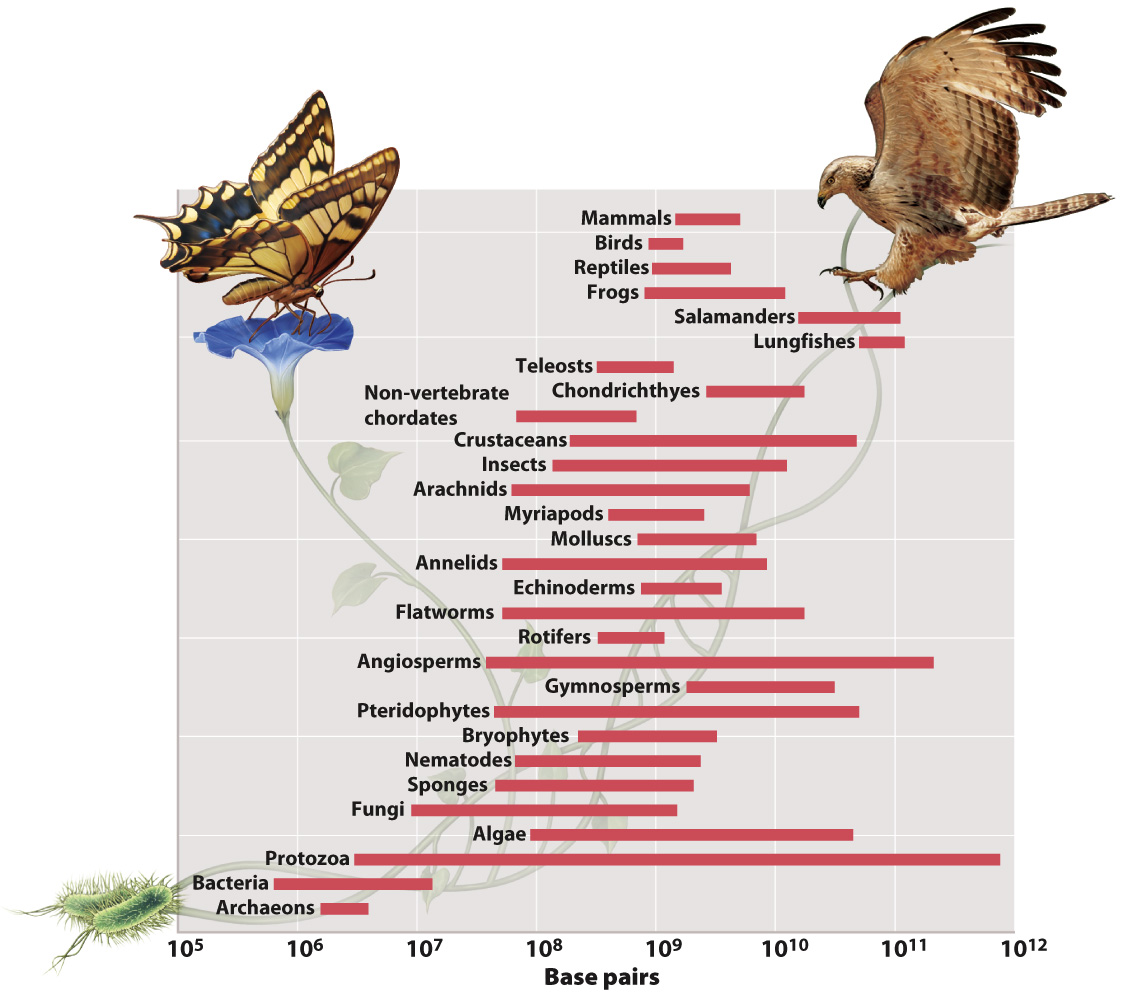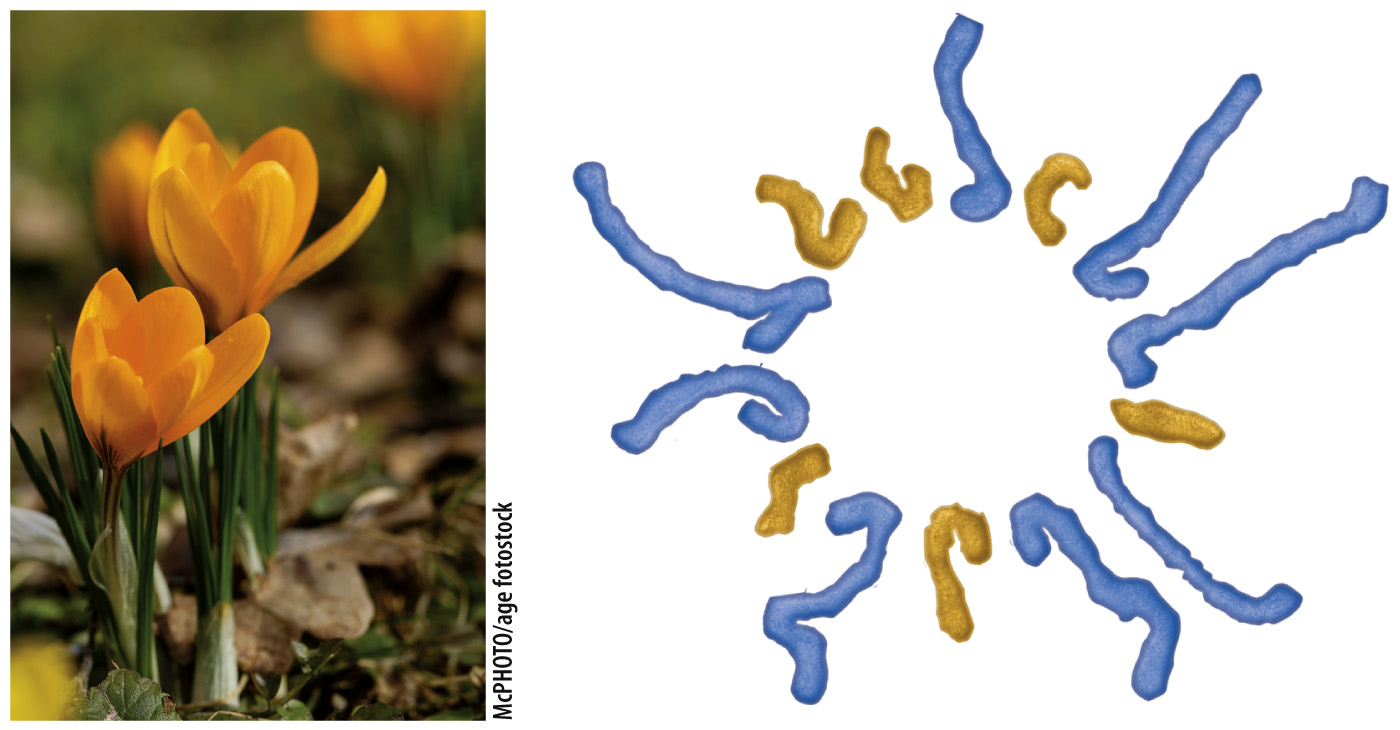Among eukaryotes, there is no relationship between genome size and organismal complexity.
In eukaryotes, just as the number of genes does not correlate well with organismal complexity, the size of the genome is unrelated to the metabolic, developmental, and behavioral complexity of the organism (Table 13.2). The range of genome sizes is huge, even among similar organisms (Fig. 13.8). For comparison, Fig. 13.8 also shows the range of genome sizes among bacteria and archaeons. The largest eukaryotic genome exceeds the size of the smallest by a factor of more than 500,000—


The disconnect between genome size and organismal complexity is called the C-
Quick Check 4 Given our knowledge of genome sizes in different organisms, would you predict that Homo sapiens or the two-
Quick Check 4 Answer
You can’t tell. The C-
Why are some eukaryotic genomes so large? One reason is polyploidy, or having more than two sets of chromosomes in the genome. Polyploidy is especially prominent in many groups of plants. Humans have two sets of 23 chromosomes, giving us 46 chromosomes in total. But the polyploid bread wheat Triticum aestivum, for example, has six sets of seven chromosomes.
Polyploidy has played an important role in plant evolution. Many agricultural crops are polyploid, including wheat, potatoes, olives, bananas, sugarcane, and coffee. Among flowering plants, it is estimated that 30% to 80% of existing species have polyploidy in their evolutionary history, either because of the duplication of the complete set of chromosomes in a single species, or because of hybridization, or crossing, between related species followed by duplication of the chromosome sets in the hybrid (Fig. 13.9). Some ferns take polyploidy to an extreme: One species has 84 copies of a set of 15 chromosomes—

However, the principal reason for large genomes among some eukaryotes is that their genomes contain large amounts of DNA that do not code for proteins, such as introns and DNA sequences that are present in many copies. These repeated sequences are discussed next.